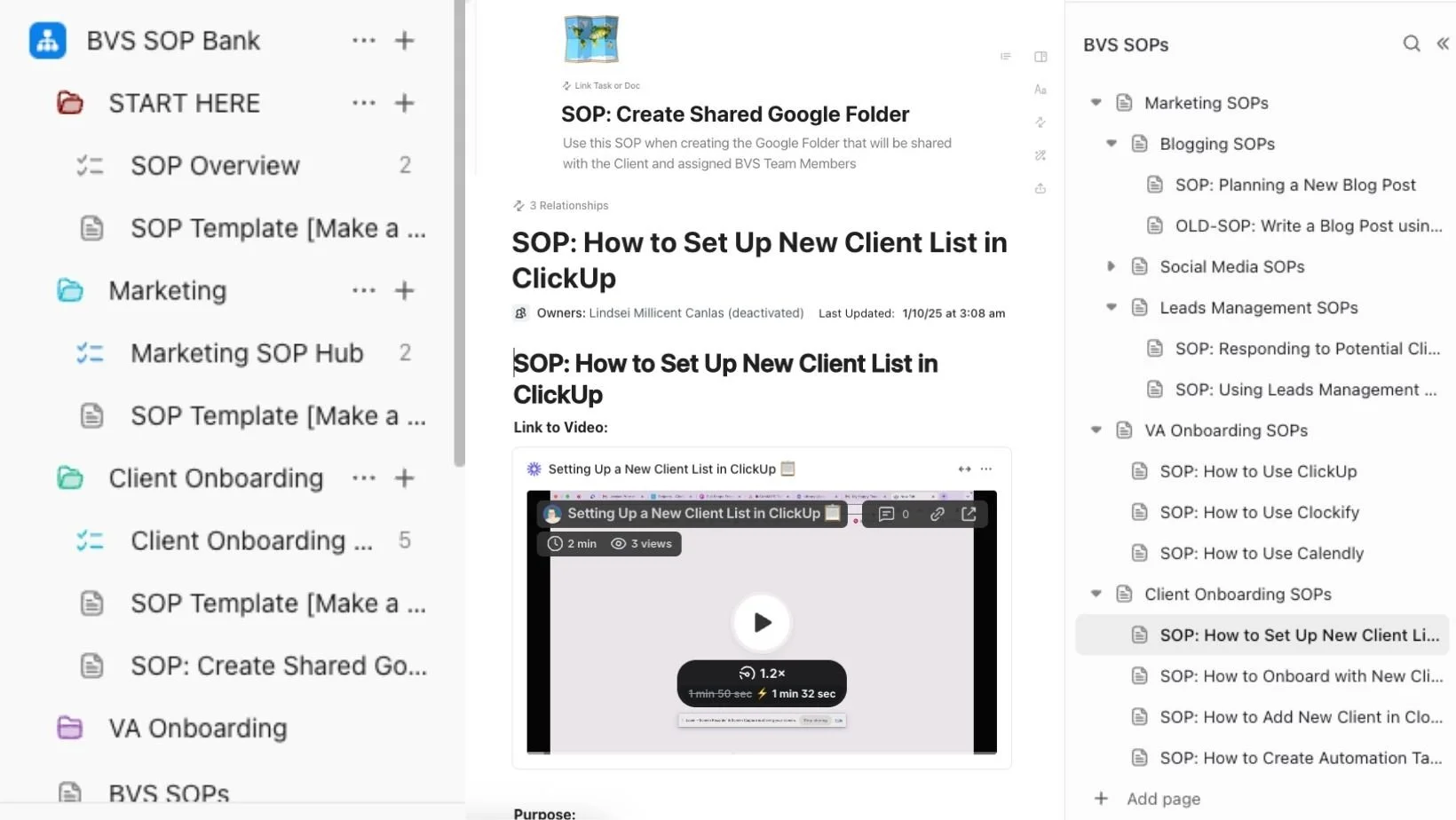Effective Standard Operating Procedures: A Guide to Writing SOPs for Your Business
When we're in the thick of running our businesses, it can be hard to discern what's something we truly need to do and what's something the "gurus" are telling us to do in order to make more money off us. There are so many shoulds and shouldn'ts it's difficult to keep up.
From an operations standpoint, effective standard operating procedures are one thing your business must never go without. This blog post will guide you through understand why I tell you this when I'm all about making your business work for you and provide direction for writing SOPs that work for your business and that you'll actually use.
Sign up for my newsletter, Business & Balance, and get my blog posts to your inbox along with my best ideas on all things systems, delegation, and spending more time doing what you love.
What is a Standard Operating Procedure (SOP)?
In the context of business, a standard operating procedure, or SOP, is a set of step-by-step guidelines or directions for completing a task in your business. An SOP can range in complexity from as simple as how to name a new document to as intensive as onboarding a new client.
SOPs are typically written, but may have a video or visual attached (if not several). They include all of the information someone would need to complete a process in your business whether that be you or someone else.
To truly understand standard operating procedures and their roles in your business, let's break down a few other business-related terms first.
Defining Systems, Procedures, and Steps
Every SOP should be structured in a way that is easy to follow, clear, and comprehensive. Below are the key elements to include in every SOP.
The Purpose & Importance of Effective Standard Operating Procedures
The purpose of writing SOPs is to ensure that your workflows are streamlined and can easily be followed by someone else in the event you are unable to complete the process yourself or if you wish to delegate the process to someone else.
Businesses not only use SOPs to ensure compliance, but to also maintain a high level of quality control within each process. Writing effective SOPs that clearly define your expectations for a task or process means that each stakeholder knows what to expect and what to do next.
I get that a lot of that sounds like corporate jargon, so let me relate it to micro businesses and solopreneurs a little better.
Well-written SOPs tell someone exactly what to do for a process if you ever have to be out of office unexpectedly or decide to hand off that process to someone else. It's a set of detailed instructions that help ensure that tasks are completed without you needing to be the one completing them. And not just that they are getting completed, but that they are getting completed the right way every time because you've clearly documented what needs to be done, when, and how.
Best Practices for Writing SOPs
What Makes an SOP Effective?
Use videos to record a quick walkthrough for complex processes.
Keep it simple by avoiding jargon and making instructions as clear as possible.
Make it accessible by storing SOPs in a shared Google Drive or Notion workspace.
Update regularly by setting a reminder to review and update SOPs every three to six months.
What Does a Well-Structured SOP Format Look Like?
Writing SOPs from scratch can feel overwhelming, but I’ve made it easier for you with a free, done-for-you template.
Get the structure you need and start streamlining your business operations today.
Writing Standard Operating Procedures for YOUR Business
Types of Standard Operating Procedures to Consider Including in Your SOP Bank
Components of an SOP You Don't Want to Leave Out
Creating SOPs Optimized for Your Unique Business and Goals
Save Time with Standard Operating Procedure Templates
Final Thoughts
Standard Operating Procedures FAQs
Why write SOPs?
How do you write SOPs?
How you write SOPs really depends on what your purpose is for writing the SOP, who will be reading the SOP, and what the desired outcome is. As with anything in business (and life!), SOPs can be customized for each business and even department within each business.
The best way to write an SOP is to record yourself completing the process and then watch the video and document exactly what you did, step-by-step. You'll want to be sure to include the purpose for the SOP, any materials or resources needed to complete the SOP, the person or role who should complete the SOP, how the SOP is reviewed, and the date the SOP was last updated at a minimum.



